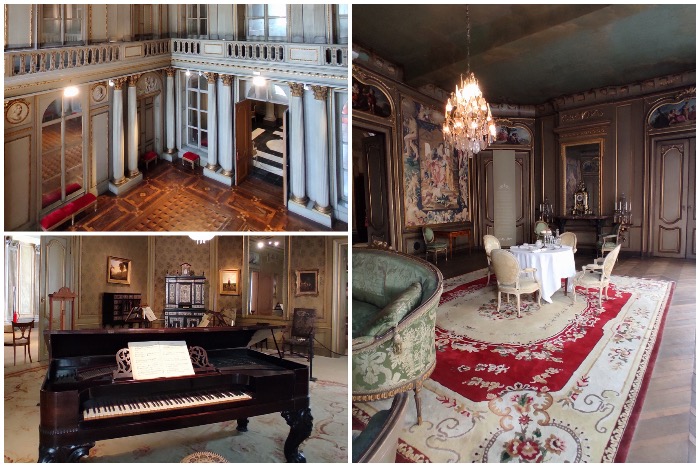
Imagine you are in Ghent, immersed in the lively atmosphere of Flanders. Might you have the opportunity to take a trip back in time, to a mansion that encapsulates the elegance of bygone eras? Let yourself be transported by the wonder of the Hotel d’Hane Steenhuyse, an 18th-century aristocratic residence that still enchants with its beauty.
I sent our bookmirror_ Chiara Bressan, who had already told us about the wonders of the Adornesdomein in Bruges, to visit this wonderful place. I am happy to share her experience in the blog, which I am sure will inspire your next trips. Ready to step back in time and discover the timeless charm of this unique mansion?
Hotel d’Hane Steenhuyse: a House Museum of Ancien Régime Elegance in Ghent
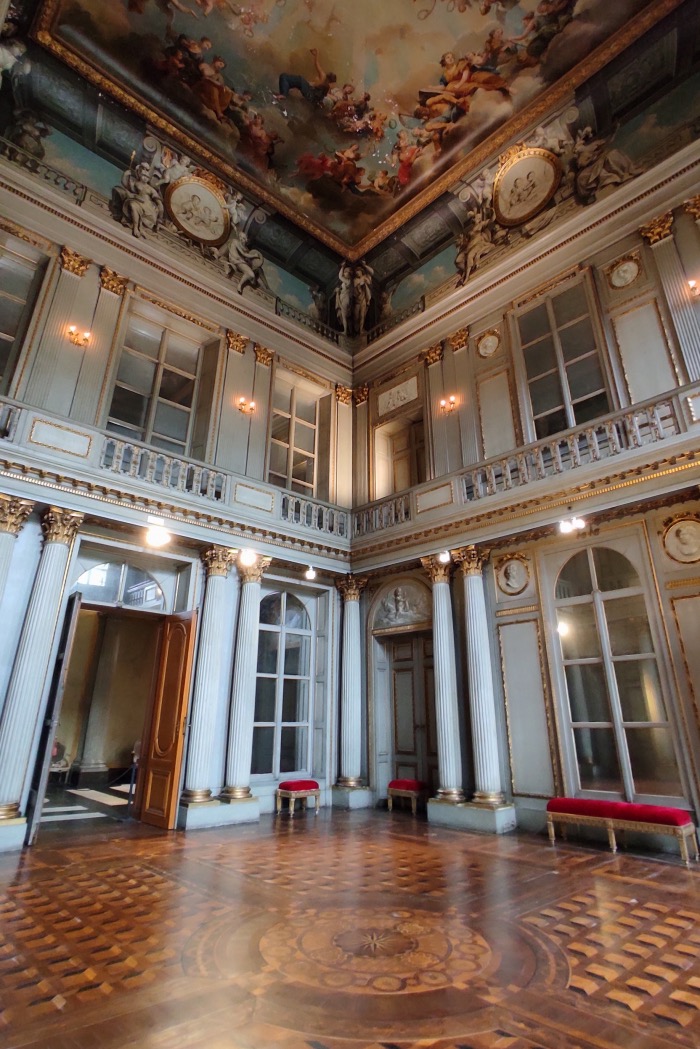
Sala da ballo / the ballroom
If you find yourself strolling through the streets of Ghent, a magnificent city teeming with life that occupies the East Flanders region, and you love to immerse yourself in the atmosphere of bygone times, you cannot fail to indulge in a stop at the Hotel d’Hane Steenhuyse house museum. This aristocratic residence dating from the 18th century is an excellent example of the Ancien Régime style.
The house can be visited free of charge at weekends, with a guided tour on Sundays at 11 a.m., and is perfect for daydreamers waltzing through sumptuous rooms and high-society receptions.
Once we enter the main hall, we immediately breathe a different air: the glitter of the large chandelier, the stairwell and the wide entrance hall welcome us to the d’Hane de Steenhuyse family. It is 1781 and our carriage parked in the Veldstraat has just left us in front of the entrance, in time for the start of the ball.
To our right, the route begins in the dining room, with the table set for six with candles and silverware arranged on the white tablecloth.
The walls are decorated with bucolic-themed frescoes that occupy the entire walls, and natural light enters through the two large windows at the back, divided by a large mirror.
After the dining room is the ballroom.
It is not very large, but sumptuous enough to make our imaginations soar to the notes of a pas de deux played by a string quartet, amidst taffeta, draperies of every colour and floor-length full skirts twirling in the wake of the latest French perfumes in vogue. The ceiling is very high and the salon overlooks the garden outside thanks to a French door that provides access to a small balcony where one can rest one’s feet exhausted by dance steps, exchange the latest gossip or try one’s luck in the evening with a gentlewoman in a silk dress.
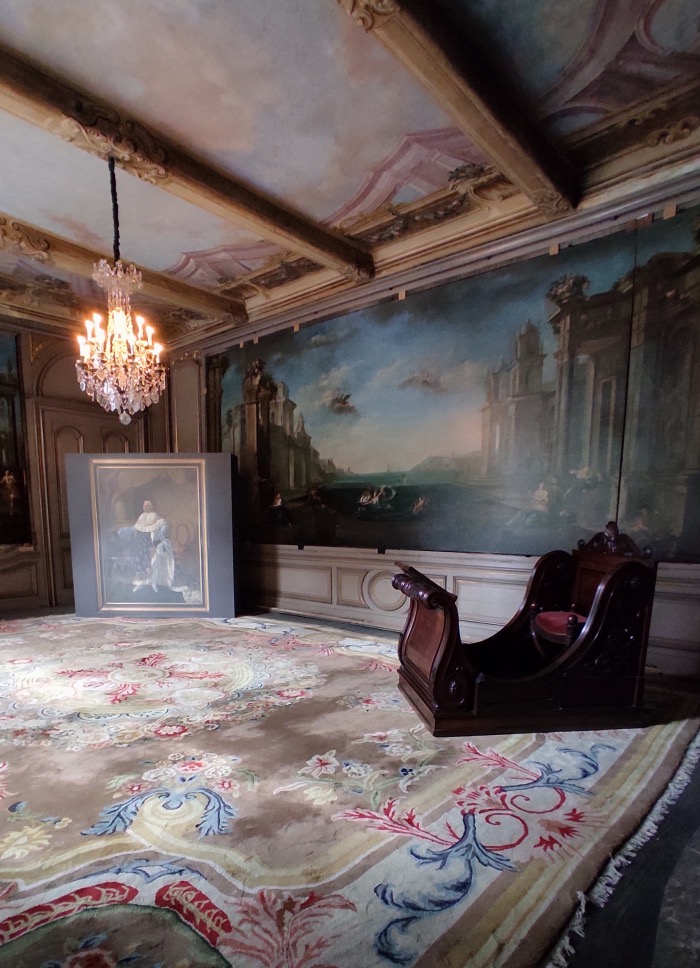
Stanza del Re / the king’s room
Immediately next to the ballroom is a private room, which was used as the king’s room when he visited his family, very close to the sovereign. In 1815, following his exile, Louis XVIII even ruled from the d’Hane residence with his entire court, and as a token of his thanks he donated an entire porcelain service to its rightful owners, which is today kept at STAM in Ghent.
Also on the ground floor, on the opposite side of the large hall, is a charming tea room, complete with a fireplace and delicious, colourful pastries that you can eat with your eyes. Mirrors and chandeliers also dominate here, along with furniture in the Ancien Régime style. Armchairs and sofas match the soft green curtains, and the fine parquet floor creaks under the weight of our footsteps after more than two centuries.
Next to the main room is a smaller, more intimate lounge. From green to pink, everything is always gathered in an enchanted atmosphere. Both rooms look directly onto the main street, the Veldstraat, thanks to the large window panes. In fact, the tea room was not only a place for gathering and socialising, but also a way for the family to literally showcase the wealth of their home to the people of Ghent, who strolled through it and got a glimpse of the social life that took place between the drawing rooms and the fluttering dresses. The heart of high society gossip was poured out in these rooms, between macarons and cups of tea served in precious porcelain.
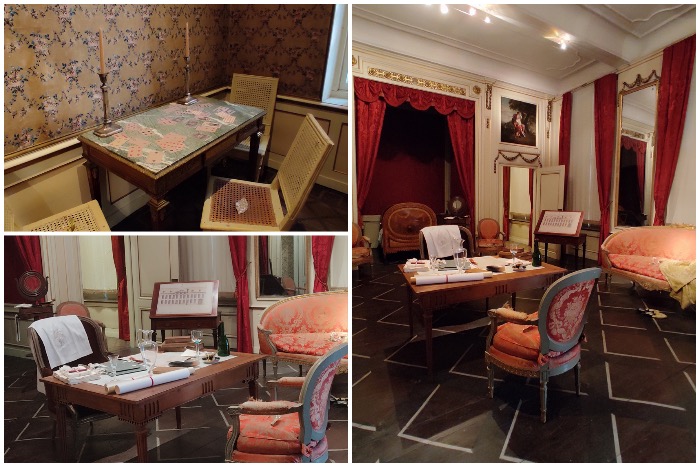
Appartamenti privati del conte e della contessa / the private flats of the count and countess
We return to the main hall and climb the stairs to the first floor.
Here were the private flats of the count and countess, separated as usual. In the count’s quarters there is a study with a writing desk and a large room that actually contains several rooms in one, with a small dining table, a recreation room for playing cards with close friends and a bed built into a small alcove.
To go from the count’s flat to the countess’s, one crosses the upper balcony of the ballroom, from which one can admire the riot of colour and the chatter of the party from above. The countess’s rooms are at first glance much simpler and also include a room for the lady-in-waiting and children, since looking after the offspring was mainly a task for the mother and servants.
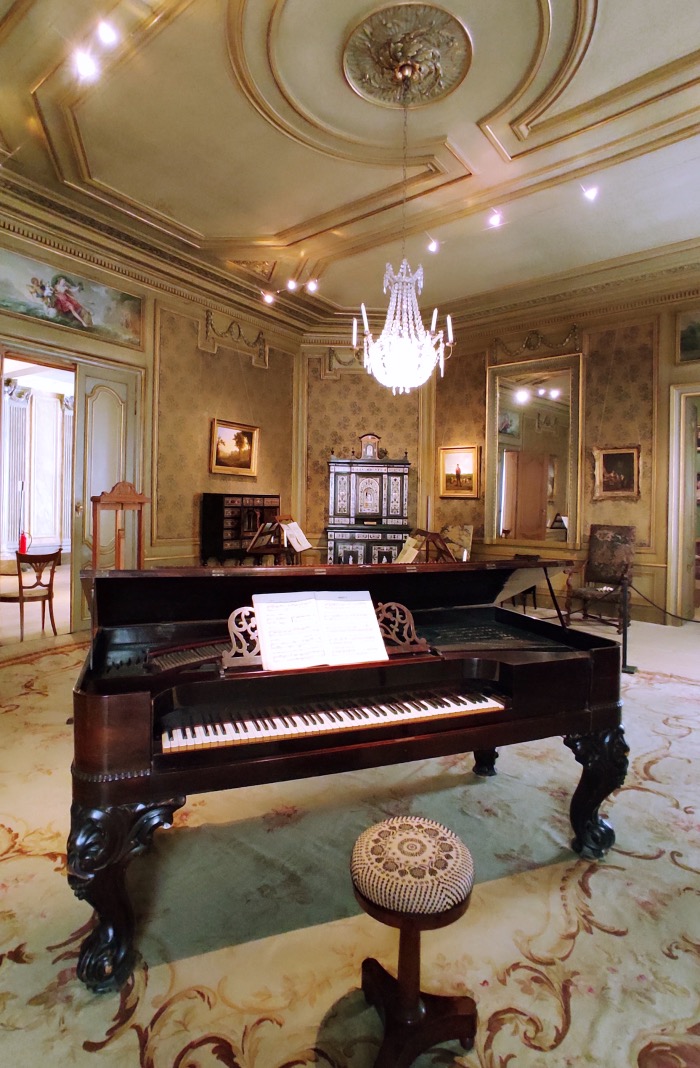
Sala della musica / music room
The last room to pass through on the upper floor is the music room.
The 18th and 16th centuries were the golden years of classical music, and in this room, furnished with a piano and music stands, private concerts took place for the family and its guests, delighted by the notes of musicians or members of the family themselves who, by moving their fingers on their instruments, would initiate magic and enchant the atmosphere for a few hours.
Now nearing the end of our visit, we descend two flights of stairs to find ourselves in the basement, used as a kitchen and cellar. This is where the finest wines of the best vintages were stored, as well as all the food reserves for the entire residence. It was also the area of the house where most of the servants resided and spent most of their time, starting with the stable boy and ending with the cooks and housekeepers. One is the kitchen room and the other the servants’ dining room. The atmosphere is decidedly different from the upper floors, but also extremely authentic and cosy. The sound from the loudspeaker reproduces the sound effects of cooking utensils and the buzz of meal preparation. Pots and bottles are placed on shelves and a large stove heats the room. All that is missing are the mutterings of the pots on the fire, the damp heat of the steam and the excited voices of the servants, in raptures for the impending ball night when everything must be perfect.
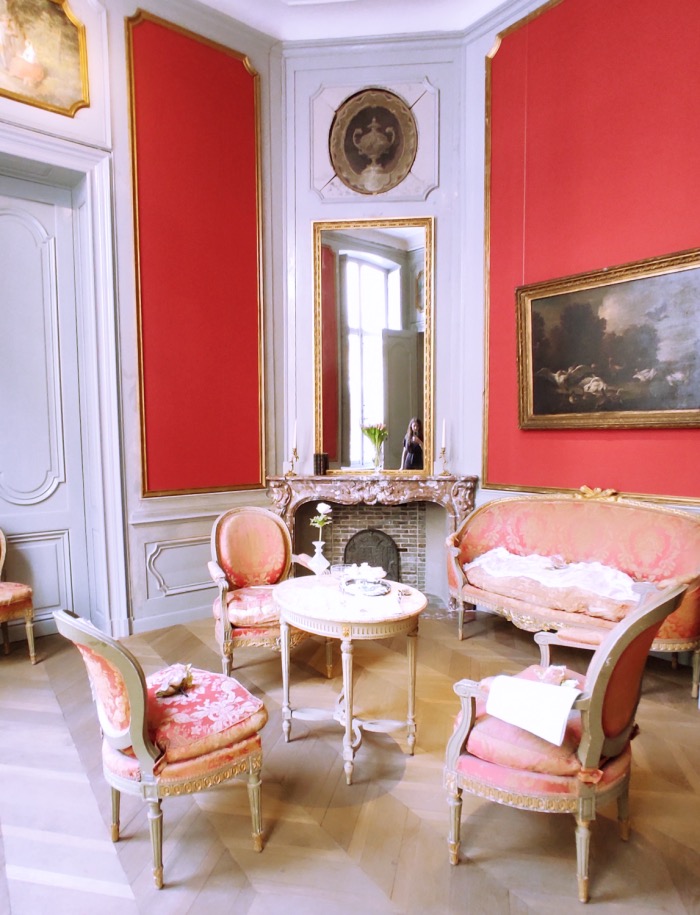
We leave the entrance to the Hotel d’Hane-Steenhuys behind us and find ourselves back on the Veldstraat. Today on weekends it is as teeming with passers-by, unaware or not of the gem that lies just a few metres away.
A visit to this residence is absolutely recommended for those with a romantic soul and who occasionally daydream of a life spent among balls and intellectual salons, with cups of tea and glasses of champagne, piano concerts in the city’s most innumerable palaces and perhaps, who knows, gallant encounters between waltz steps. As we leave the hotel, we take one last peek at the salon, thinking of who knows how many, like us and before us, have wondered, looking through that glass, what those beautifully dressed ladies were ever talking about.
Exploring the Hotel d’Hane Steenhuyse, you will have the opportunity to immerse yourself in the rich history of art and culture of Flanders, a fascinating topic that is further explored in the art cities of Belgium. Find out more about Art and culture in Belgium: the art cities of Flanders.

